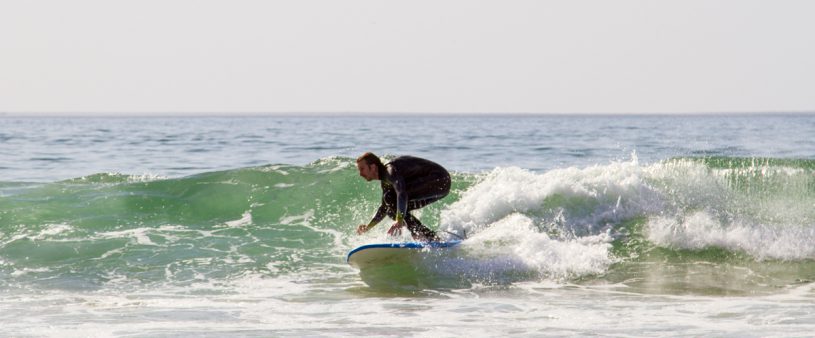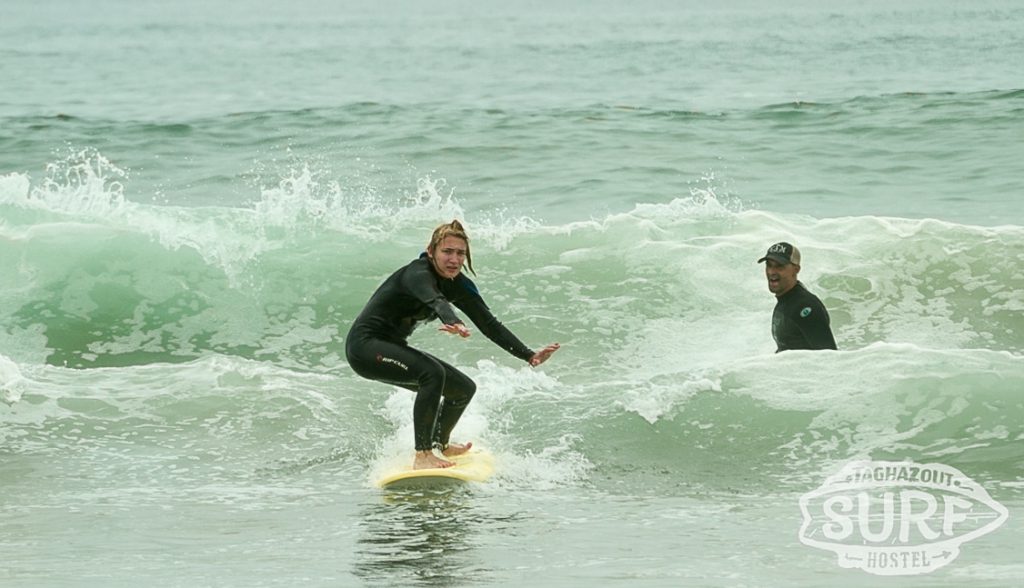Surfing is hard enough as it is. Not only do you have to balance and turn on the board, you have to learn to position yourself, paddle correctly, drop in, and pop up on moving waves just to get to the riding part. It’s like trying to snowboard on a moving mountain or skateboard on a moving street.
Choosing the wrong place to begin can be the difference between loving and hating surfing. Most surf schools will take you to a proper spot, but if you go out on your own follow the suggestions below:
- The right place to begin is in the white wash. Find a beach break with a sandy bottom and paddle out to where the waves have already broken and get accustom to trying to stand on the moving white wash. This video illustrates the point
- The wrong place to begin is in the lineup with other surfers. You are going to be a hilarious mess the first time and don’t need the added hassle of trying to stay out of everyone’s way. You will make it out there eventually, but not until you’re comfortable paddling, standing up and leaning into a turn without falling.
 What Wave to Surf
What Wave to Surf
Generally, you want a wave that is big enough to push you on your board. The whitewash in the left picture is about 1.5 feet tall – you do not want anything smaller because it will be too hard to stand up and you will be going too slow surfing.
In this picture there is a smaller wave in front of the wave (the dark one in the background) that you might catch. If you catch the smaller front wave, it will not have enough power for surfing. If you catch the second wave, you will run right into the front wave, ended up in a nose-dive (the front of your board going under water).
This whitewash wave is so small it’s hard to see. Remember, the smaller the wave, the harder you have to paddle to catch it and the harder it will be to stand up (no momentum). Tip: You want to use the wave’s momentum to help you stand up. So if you catch a big wave, use it’s power to do the push-up. Then wait until you are balanced to stand up.
If you catch this wave right now, you will definitely end up nose-diving (which results in you falling off the board and the board flying high into the air). As you can see, the wave is still breaking and turning into whitewash, so you want to wait 2-3 seconds longer to catch it or paddle really fast in front of the wave to make sure it has broken behind you. Check our package for beginners


 What Wave to Surf
What Wave to Surf